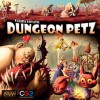profile badges

...
...
...
recent achievements

I Love Playin' Games
Claim that you have played a game today by clicking the "Played Today!" button on a game page 50 times.
Claim that you have played a game today by clicking the "Played Today!" button on a game page 50 times.

Zealot
Give 50 hearts (loyalty points) to a single game
Give 50 hearts (loyalty points) to a single game

I Play This One a LOT
Play a specific game 20 times.
Play a specific game 20 times.

Gamer - Level 4
Earn Gamer XP to level up!
Earn Gamer XP to level up!

















Phoenicia
The game is about the race to become the first city-state in the Fertile Crescent. Each player starts out as a village of Hunters and Farmers, then by acquiring Development cards they expand, eventually becoming a city-state and triggering the end game. Player with the most VP’s wins.
Components: Excellent quality, white plastic ‘neutral’ markers, plus coloured VP and Production markers for the players. Laminated tiles and cards, plus a central scoring board.
Each player starts with a ‘village’ of a Hunter, a Farmer, a Training ground and a Storage/Treasury tile. The Hunter and Farmer tiles have cumulative spaces on them, allowing you to see ‘at a glance’ what Production/VP the tile is worth; they each start with 1 worker, giving 2 VP and 3 Production at the start of the game. They get 1 untrained worker, plus 2 coins in the Treasury, plus a Production card.
The central board is the scoring/production track, with the central area being a visual aid to what discounts a player has earned, plus a development track showing what developments lead on to others.
Set-up: Each player gets the above set up, pus a special value’5’ Production card (dark-backed), played once then discarded out of the game.
Development Deck: This is set up before play based on the number of players so that only certain numbers of a given card are available. For example; in a three player game there are only 2 granaries available and one shipyard
Turn:
Play starts with the Overlord ( determined randomly; thereafter the player with the most VP’s.)
Development cards equal to the number of players are revealed. Start player may bid on one of these. The minimum bid is marked on the card. Winners pays with cards and/or coins; taking any change in coins; then applies any VP/Production change. Some cards give discounts (marked with cubes); others grant extra tiles (eg :the Tracker card gives Improved Hunting). The active player can then initiate other auctions, regardless of whether they won or lost the last auction.
The player may then train and employ workers from out of their training ground. It costs 2 to train a worker and whatever the cost of the tile to employ him ( 2 for farming, 8 for mining etc.)
Finally, a check is made to see if treasury limits have been exceeded; if so then excess is discarded.
Once a players turn has ended then they may not participate in further auctions.
Once all players have had their turns:
The next Overlord is the player with the most VP’s
Development cards are turned so that there are a number visible equal to the number of players
Players get cards and coins based on their position on the Production track. Excess coins can be traded for cards on a 4:1 basis; but a player can only hold a number of cards equal to the number of storehouses held.
Thoughts:
I really like this game; however the rules are clear as mud.. Some of the cards have symbols on which are not explained; you have to refer to and extrapolate from the text. An example is the Prospector; this gives you the Mining Card; but the symbols on the card could mean anything.
Resources are tight. And I mean TIGHT! The only way to get more meeples and storehouses is to acquire a Development card that grants them. However, money is also tight. So you only bid on what you need; but you do have to watch if the card will benefit your opponent more
In the second game I played, Yellow had 7 storehouses. That meant he could hold up to seven cards in his hand. Fine, but throughout the game he never held more than four. So all that extra resources he spent to get those four were wasted.
The main aim of the game is around the auction. If you don’t like auction games then don’t play this one